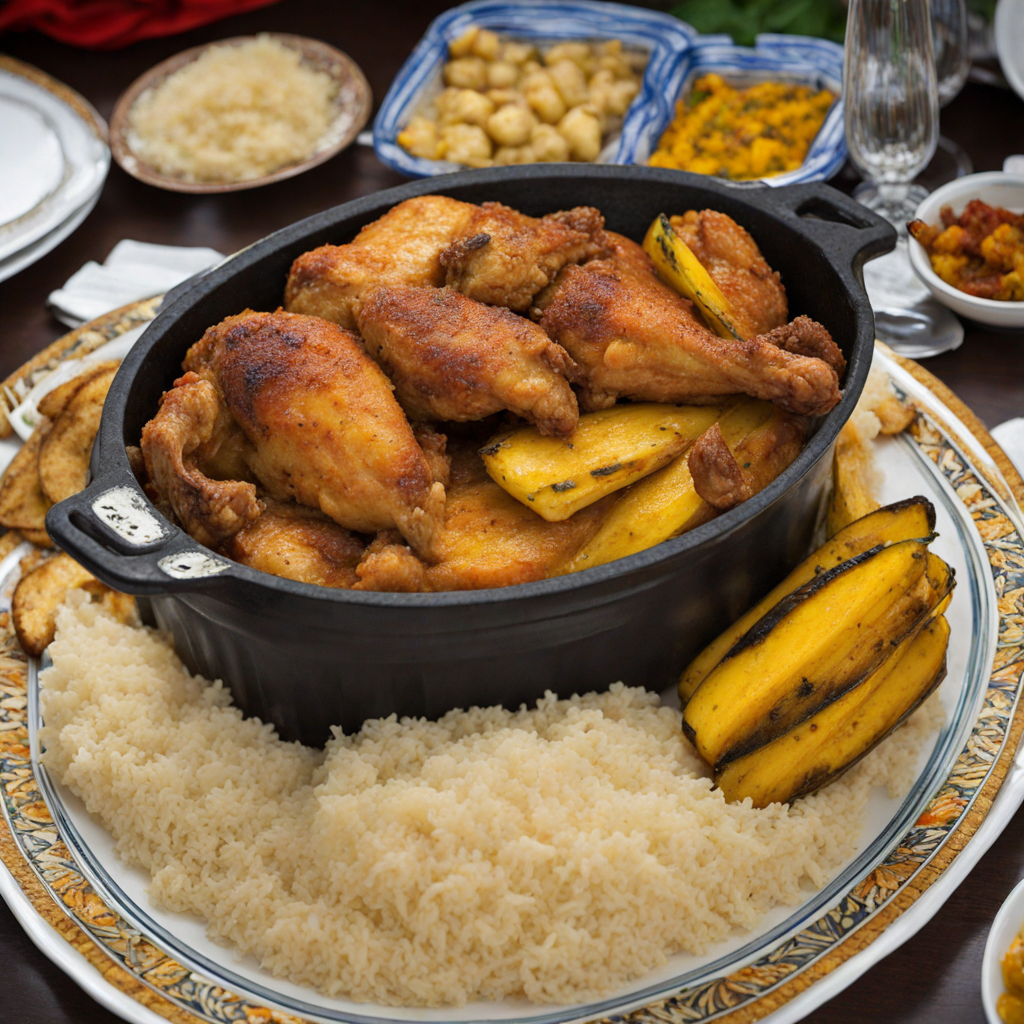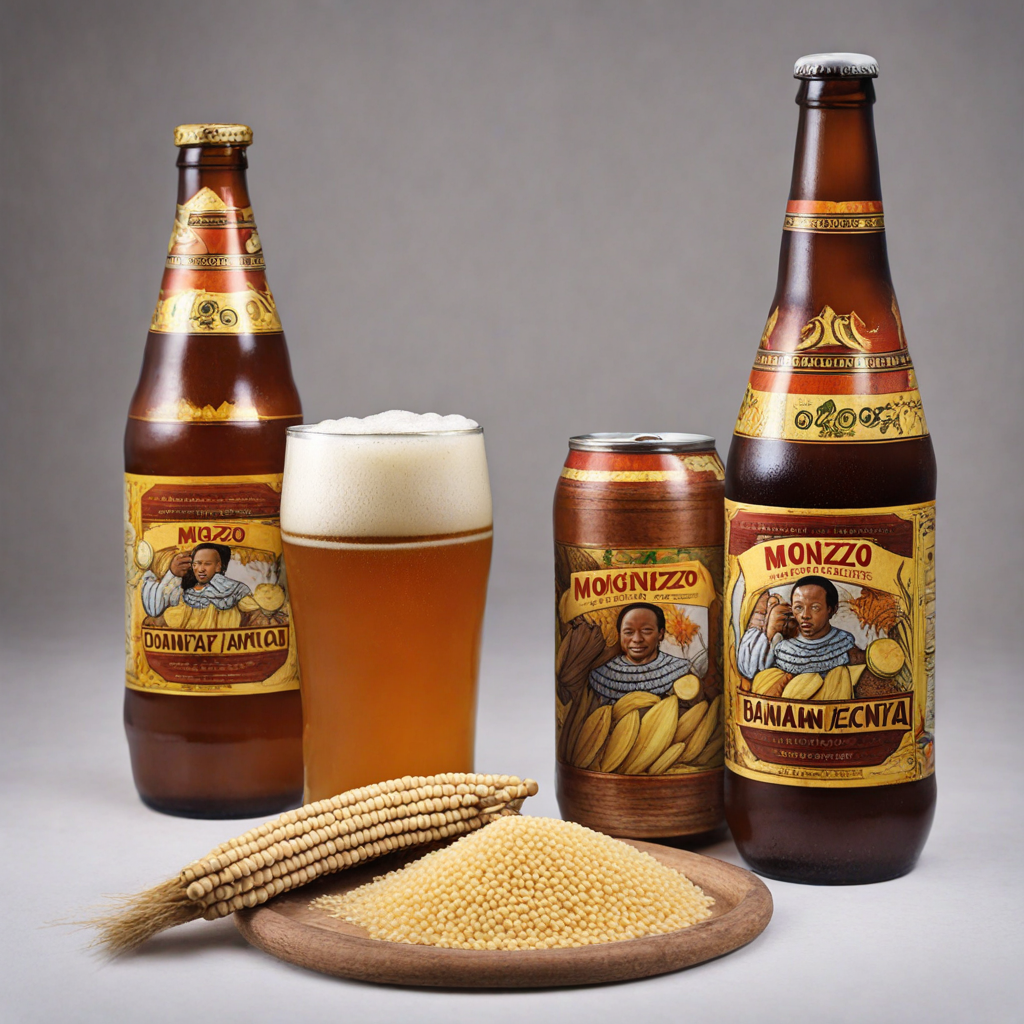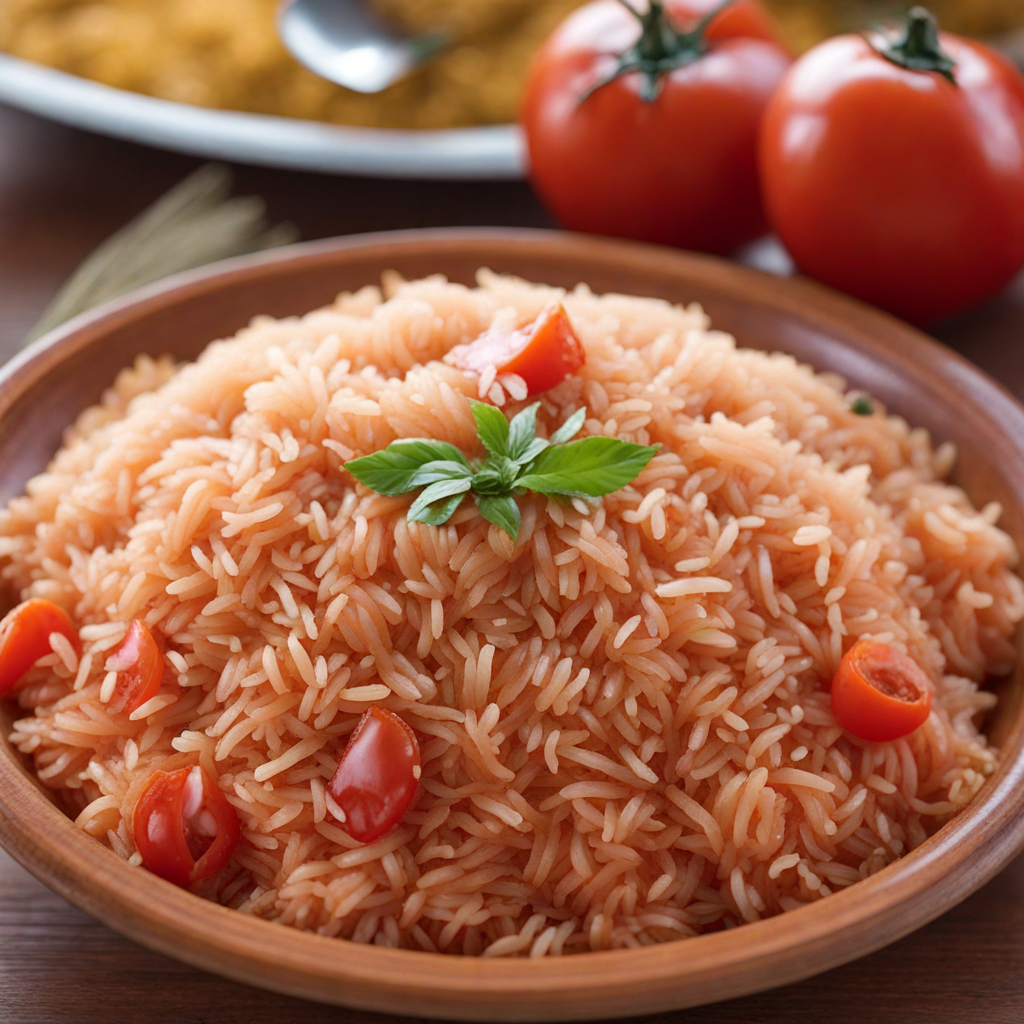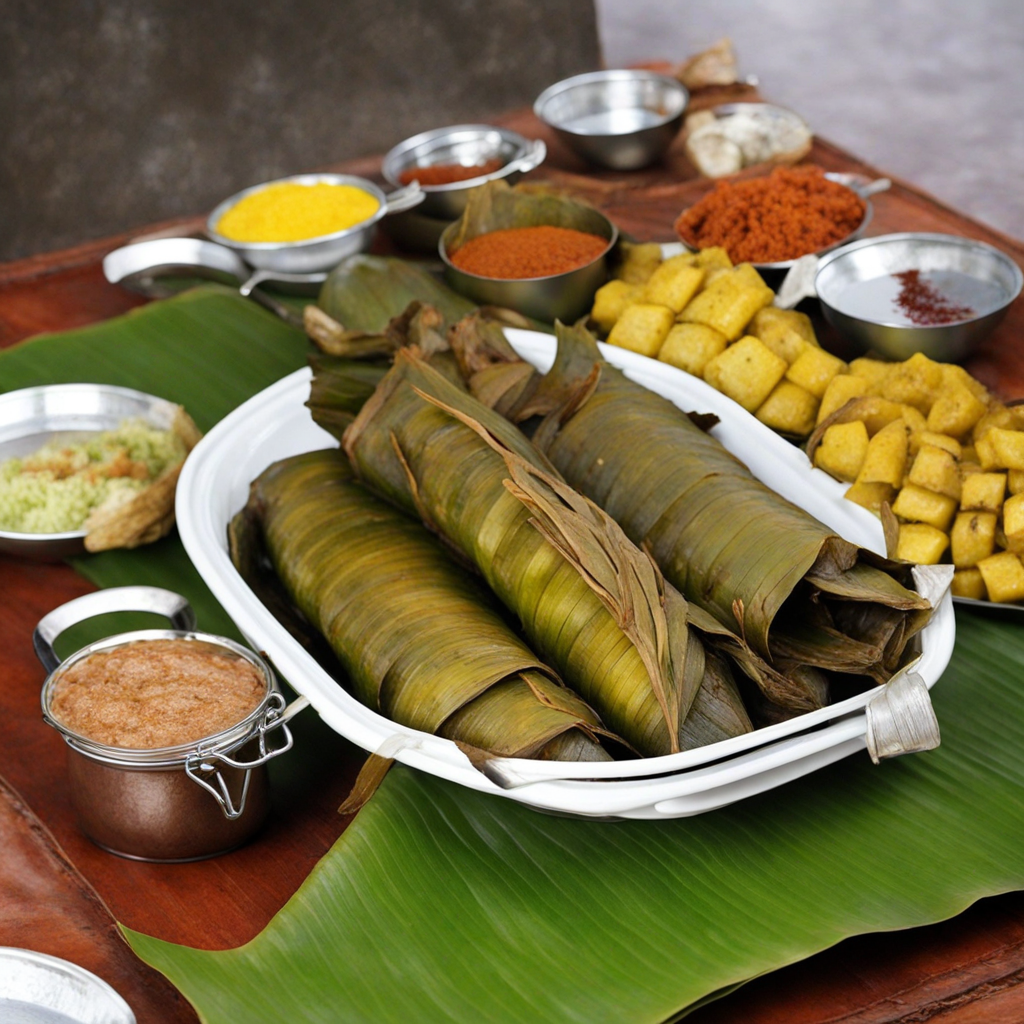Poulet DG
Poulet DG, a beloved dish from the Central African Republic, showcases the rich flavors and vibrant culinary culture of the region. At its core, this dish features tender chicken that is marinated with a blend of spices, including garlic, ginger, and a variety of local seasonings. The marination process infuses the chicken with a deep, savory flavor that is both aromatic and enticing. Once marinated, the chicken is typically sautéed to achieve a beautiful golden-brown crust, sealing in the juices and enhancing its taste. What sets Poulet DG apart is the colorful medley of vegetables that accompany the chicken. Common additions include bell peppers, tomatoes, and onions, which are sautéed alongside the chicken, creating a harmonious blend of flavors and textures. The vegetables not only add a burst of color to the dish but also contribute to its overall freshness and nutritional value. Often served with rice or plantains, Poulet DG becomes a complete meal that is both satisfying and comforting. This dish is often prepared for special occasions or family gatherings, making it a symbol of togetherness and celebration in Central African culture. The balance of spices and the combination of juicy chicken with vibrant vegetables create a culinary experience that is both exotic and familiar, inviting those who try it to explore the diverse tastes of Central African cuisine. Each bite of Poulet DG is a delightful journey, offering a taste of the region's heritage and a chance to indulge in its unique flavors.
How It Became This Dish
The Culinary Journey of Poulet DG: A Central African Delight Poulet DG, a delectable chicken dish from the Central African Republic (CAR), is not just a meal; it is a representation of the nation’s rich culinary heritage, cultural identity, and social fabric. The name “Poulet DG” translates to “Chicken Director General,” a title that hints at both the dish's origins and its importance in Central African culture. This dish serves as a feast for celebrations, gatherings, and significant events, symbolizing both abundance and hospitality in a land where community and family ties are paramount. #### Origins of Poulet DG The origins of Poulet DG can be traced back to the diverse culinary practices of the Central African Republic, a country characterized by a wealth of ethnic groups, each contributing to its gastronomic landscape. The dish is believed to have emerged in the mid-20th century, around the time of the country's independence from France in 1960. During this period, there was a burgeoning sense of national identity, and traditional foods began to take on new meanings as symbols of pride and unity. Poulet DG is often prepared using locally sourced ingredients, including chicken, plantains, vegetables, and spices. The dish typically features marinated chicken that is sautéed with onions, tomatoes, and bell peppers, creating a vibrant sauce that is both flavorful and aromatic. The addition of fried plantains, a staple food in many Central African nations, complements the dish perfectly, providing a balance of sweetness and texture. #### Cultural Significance In the Central African Republic, food is a central element of social interaction. Poulet DG is often reserved for special occasions—weddings, family reunions, and national holidays—marking it as a dish of celebration and festivity. The preparation and sharing of Poulet DG is a communal activity, emphasizing the importance of togetherness and shared experiences in Central African culture. The dish also reflects the influence of French colonial cuisine, which introduced techniques and ingredients that have since become integrated into local cooking. The blending of indigenous and colonial culinary practices in Poulet DG exemplifies how food can transcend cultural barriers, leading to a unique culinary syncretism that highlights the complex history of the region. Furthermore, the title “Director General” evokes a sense of prestige, implying that this dish is fit for dignitaries and special occasions. The name serves to elevate the dish beyond mere sustenance, transforming it into a symbol of respect and celebration. In many households, mastering the art of making Poulet DG is considered a significant achievement, often passed down through generations as a point of pride. #### Development Over Time Over the decades, Poulet DG has evolved, adapting to changing tastes and influences. While the core ingredients and preparation methods have remained largely consistent, contemporary interpretations of the dish may include variations that cater to modern palates or dietary preferences. For example, some cooks may incorporate more spices or use alternative cooking methods, such as grilling or baking, to create lighter versions of the dish. The globalization of food culture has also played a role in the adaptation of Poulet DG. As immigration and travel have increased, Central African cuisine has begun to gain visibility on the international stage. Restaurants serving Central African dishes, including Poulet DG, have started to appear in urban centers across the globe, introducing this cherished dish to wider audiences. This exposure has led to a greater appreciation of CAR's culinary heritage and has inspired chefs to experiment with traditional recipes, integrating them into contemporary dining experiences. Moreover, the rise of social media has allowed food enthusiasts to share their culinary creations and experiences, further promoting Poulet DG as a symbol of Central African culture. Online platforms have given rise to a community of home cooks and chefs who celebrate and innovate traditional recipes, encouraging the next generation to engage with their culinary heritage. #### The Present and Future of Poulet DG Today, Poulet DG continues to be a beloved dish in the Central African Republic and beyond. It is often featured in national celebrations, cultural festivals, and family gatherings, reinforcing its status as a dish of significance. As the Central African Republic navigates the complexities of modernity, the importance of traditional foods like Poulet DG offers a sense of continuity and connection to the past. In recent years, there has been a resurgence of interest in traditional foods and culinary practices across Africa. This movement emphasizes the importance of preserving cultural heritage through food, encouraging younger generations to embrace their culinary roots. Educational initiatives, cooking classes, and community events have started to highlight Poulet DG and other traditional dishes, fostering a sense of pride in Central African cuisine. As the world continues to evolve, so too does the story of Poulet DG. The dish stands as a testament to the resilience and adaptability of Central African culture, reflecting both its history and its aspirations for the future. Whether served at a lavish banquet or a humble family meal, Poulet DG embodies not only the flavors of the Central African Republic but also the spirit of its people. In conclusion, Poulet DG is more than just a dish; it is a culinary emblem of the Central African Republic, encapsulating the country’s history, culture, and social values. As it continues to develop and adapt in an ever-changing world, Poulet DG remains a beloved staple that connects generations and celebrates the rich tapestry of Central African life. Its legacy as a dish of celebration and community ensures that it will endure in the hearts and homes of those who cherish it.
You may like
Discover local flavors from Central African Republic







